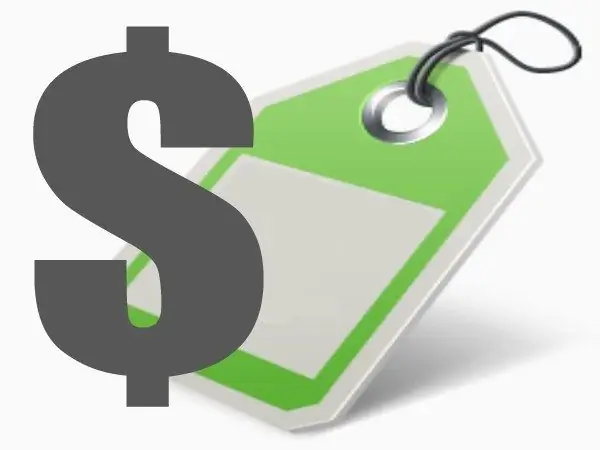- Author Isaiah Gimson [email protected].
- Public 2023-12-17 02:53.
- Last modified 2025-01-24 12:06.
Everything a person deals with has a price. Whether it's a product, a service, or more abstract concepts: life, happiness, peace, etc. In economic terms, price is the monetary expression of the value of a product. But what is it made of?

The essence of pricing
The main factor in pricing is cost and demand. In economics, the cost is called the cost of producing and selling products in cash. The prime cost is divided into actual and planned.
The planned cost includes the necessary costs at the level of technology and organization of production. These are the use of equipment, consumption of materials, energy use, labor costs.
Actual cost includes costs related to handling the product, organizing the work, and managing the manufacturing process. Other costs are also included in the price determination: taxes, loan payments, training costs, business trips, rental fees, fund contributions, depreciation of intangible assets, insurance payments.
In addition to the production cost, the non-production, commercial factor also affects the final price component. These types of costs determine the wholesale price of goods. On its basis, the selling price is formed, taking into account value added tax (VAT) and excise tax (on excisable goods).
The retail price is the final selling price directly to the consumer, taking into account margins, including the costs of trade enterprises and VAT of trade services.
The psychology of pricing
The price and quantity of goods sold is determined by demand. The law of demand assumes that price is the main variable for the quantity of goods sold. More goods are bought at lower prices and less at higher prices. But this variable would be at rest if the fact of the number of sales were not influenced by other variables: the budget and tastes of the buyer, the prices of competitors, seasonality, efforts in advertising.
There are also numerous different discounts and promotions. But determining the demand for a product by comparing prices by a buyer has a complex structure. When the price is reset, there is a threshold beyond which there is no significant increase in sales. Therefore, when studying the psychology of price behavior, one speaks not of a point price, but of a price range.
Demand violations often occur in high-end market segments. It is not uncommon here that there is a high volume of sales at higher prices. This is due to the prestige and the maintenance of their own image. The brand has a significant impact on the price of a product. Shopping at branded prices significantly increases sales. And as we already know, the volume of sales determines the level of prices.






